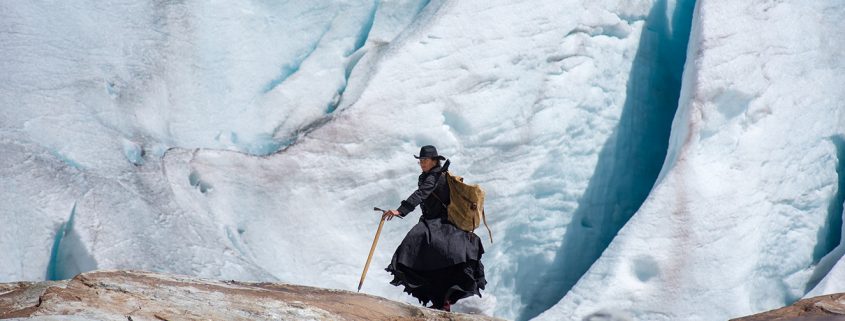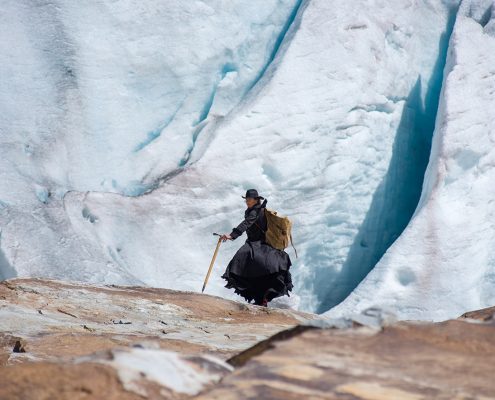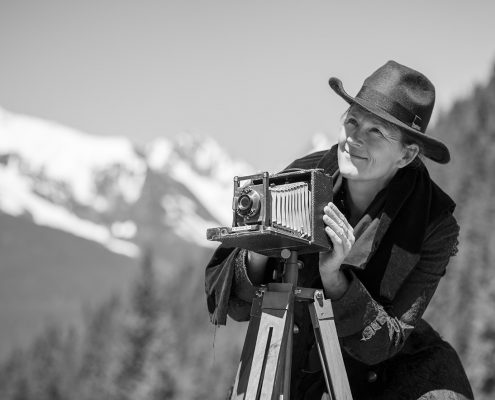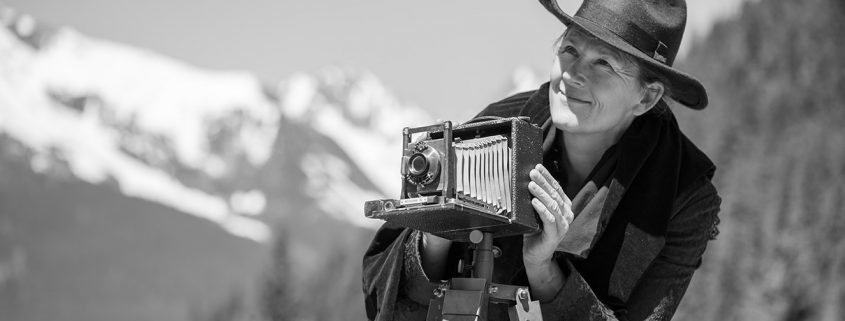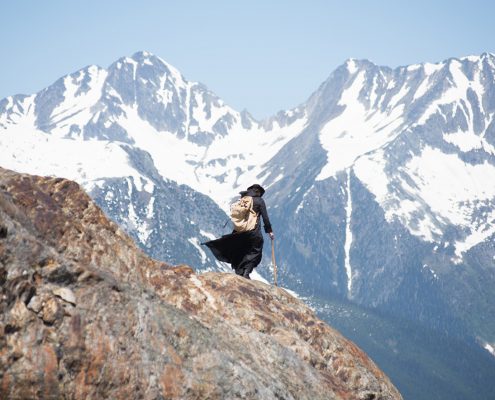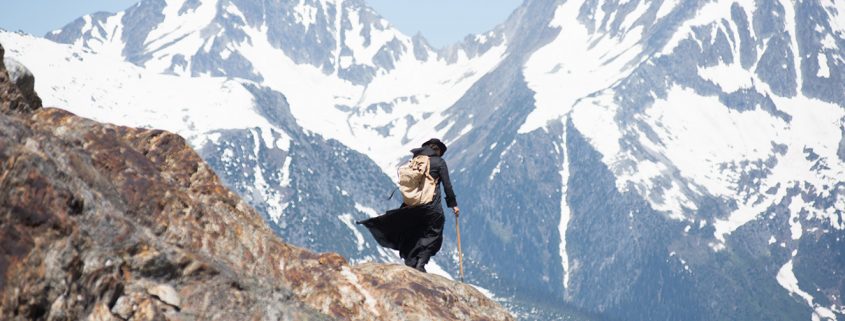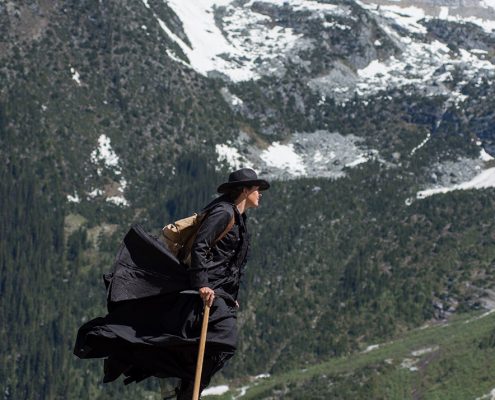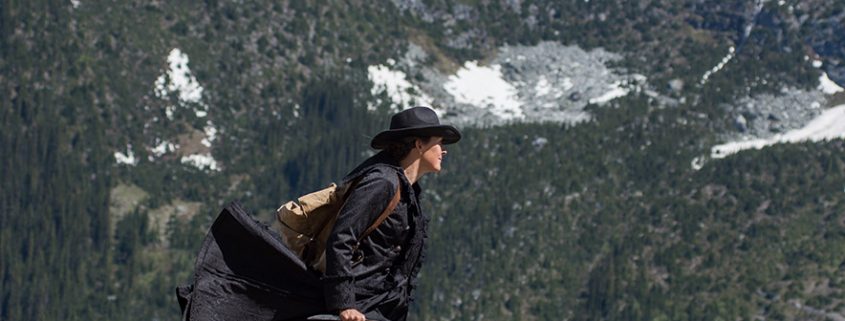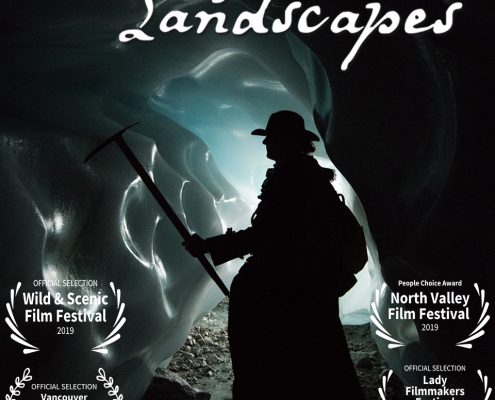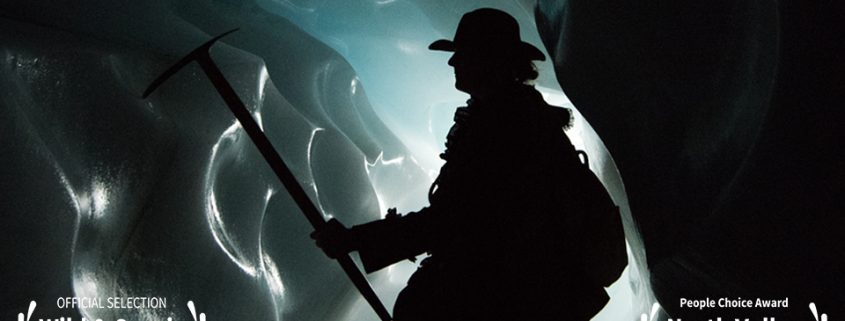CARVING LANDSCAPES
Nel 1910 Mary Vaux affronta in abito vittoriano e piccozza antidiluviana l’enorme ghiacciaio canadese Illecillewaet. All’epoca aveva cinquant’anni, indossava una gonna ampia e pesante, una camicia bianca a collo alto e un cappello a tesa larga. Arrivata sulla cima del ghiacciaio, un muro di ghiaccio alto 22 metri con crepe blu luminescenti, aveva lasciato cadere i suoi pesanti attrezzi da arrampicata, raccolto le vesti da una parte e tracciato con il catrame una linea su una roccia sul bordo del ghiaccio. Con quel segno, Vaux è diventata la prima studiosa nordamericana a occuparsi della recessione glaciale. Da quel momento è iniziata la sua fama come una delle poche donne che in quel periodo infrangevano le barriere di genere sia nel mondo della scienza che in quello dell’alpinismo. Dopo avere scoperto la storia di Vaux attraverso una vecchia fotografia, alla regista Agathe Bernard è venuta l’idea di andare a cercare quella linea segnata da Vaux con il catrame e di ripercorrere la sua esperienza. Il risultato è il breve documentario Carving Landscapes.
Replica domenica 20 giugno ore 12.00 Sala 2
In 2016, the filmmaker Agathe Bernard stumbled on a grainy black-and-white photograph of a woman in a Victorian dress carrying an ice ax, dwarfed by the massive ice around her. That single captivating image sent Bernard on a hunt to discover the story behind it, one that would define the next two years of her life.
The woman in the photograph was Mary Vaux, and she’s standing by the Illecillewaet Glacier on Rogers Pass, an hour’s drive east of Bernard’s home. The date was 1910 and Vaux, who was 50 years old at the time, was wearing full, heavy skirts, a high-collared white shirt and a full-brimmed hat. She had mountaineered up the pass and arrived at the toe of the mighty glacier, a 22-metre-high wall of dirty ice with cracks of luminescent blue. She dropped her heavy climbing tools, shoved her skirts aside, and painted a line in tar on a rock at the edge of the ice. With that mark, she became the first person in North America to study glacial recession and solidified her role as one of the few women at that time who were breaking gender barriers in both the science and mountaineering worlds.
Rerun Sunday June 20th h. 12.00 Hall 2

